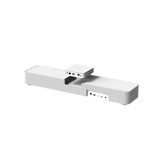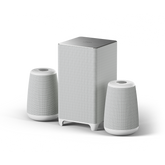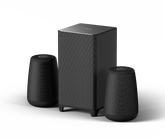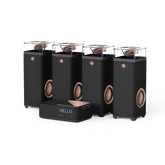Smart TV vs. Set-Top Box: Which Device Will Win the Future of Streaming?
The digital entertainment landscape has changed dramatically over the past decade. The cord-cutting revolution, which began in the mid-2010s, initially fueled the growth of set-top boxes (STBs) from companies like Homatics, Roku, Google, Apple, and Amazon. These devices provided a crucial bridge, enabling access to streaming services on traditional "dumb" TVs. However, the increasing dominance of smart TVs has begun to reshape the market, raising a key question: Will STBs eventually disappear? This article explores this question, examining the evolving market, the key players, and the surprising resilience of the set-top box in the age of smart TVs.
The Rise of the Set-Top Box:
Question: What factors led to the initial boom in the set-top box market?
During the mid-2010s, the rise of streaming services created a surge in demand for devices that could deliver this content to TVs. Homatics, Roku, Google (Chromecast), Apple (Apple TV), and Amazon Fire TV emerged as key players, offering users a way to access a growing library of on-demand content. This era also saw the arrival of more affordable options, such as "TV Smart Sticks" from budget retailers, further accelerating the adoption of streaming.

Global set top box market, 2018-2030 (US$M)
The chart illustrates the market trajectory. It's challenging to provide exact annual figures for the entire period. Market data varies across different research firms and reports. The chart provides available data points to show the market's trajectory. The data shows that the global set-top box market generated a revenue of USD 24,789.7 million in 2023 and is expected to reach USD 30,525.0 million by 2030, growing at a CAGR of 3% from 2024 to 2030.
While precise unit sales figures for those specific years are difficult to isolate, the general trend can be described as a period of growth, followed by a stabilization of the market. Factors influencing this trend include:
-
Early to Mid-2010s: Rapid growth driven by the increasing adoption of streaming services and the need to access them on non-smart TVs. This was a period of explosive growth, with consumers eagerly seeking ways to "cut the cord" and access new streaming platforms.
-
Late 2010s Onward: Market stabilization and gradual growth, influenced by the increasing prevalence of smart TVs with built-in streaming capabilities, alongside continued demand for advanced STBs for enhanced features and specific use cases. The growth of smart TVs introduced a new dynamic, but STBs maintained their relevance by offering enhanced performance and features.
This era also saw the arrival of more affordable options, such as "TV Smart Sticks" from budget retailers, further accelerating the adoption of streaming.
The Smart TV Revolution and its Impact:
Question: How has the rise of smart TVs affected the set-top box market?
Fast forward to today, and the landscape has shifted significantly. Smart TVs, with integrated streaming capabilities, have become the norm. It's now challenging to find a new television that doesn't come equipped with built-in apps for Netflix, YouTube, Disney+, and other popular services. This integration has naturally led to a decline in the reliance on external set-top boxes.
This shift has significant implications for the future of home entertainment. Modern smart TVs are no longer just displays; they are sophisticated computing platforms with advanced capabilities. Automatic Content Recognition (ACR) technology, for example, allows TVs to identify what viewers are watching in real-time, providing valuable data for content recommendations, audience measurement, and targeted advertising. This has created both opportunities and challenges for the set-top box market.
The Growing Importance of Data:
Question: What is the significance of viewer data in the current entertainment landscape?
The battle for control of the "last device" in the content delivery chain—the device that directly controls what's displayed on the screen—is crucial. This device holds the key to valuable viewer data. While STBs once held this position, smart TVs have now largely taken over, thanks to the ease of integrating streaming apps directly into the television itself.
Companies like Walmart recognize the immense value of this data, as evidenced by their acquisition of Vizio. Vizio's Platform+ business, which includes advertising and viewer data, has become a significant source of revenue. By owning the TV platform, Walmart gains deeper insights into viewer behavior, enabling more effective targeted advertising for its products. This highlights the ongoing importance of the device that controls content delivery.
Homatics' Strategic Focus:
Question: How is Homatics navigating this evolving market?
Homatics is well-positioned in this evolving landscape, primarily focusing on providing advanced set-top box solutions. While the trend leans heavily towards smart TVs, Homatics recognizes the continued demand for high-performance STBs and offers a range of products to enhance the TV viewing experience. Homatics provides solutions that enhance and expand the smart capabilities of televisions. Here's how:
Homatics offers a range of STB products, including:
These products cater to a variety of user needs and preferences, delivering features like 4K resolution, high processing power, and user-friendly interfaces. Homatics' focus on STBs allows them to provide specialized solutions for users who want a premium streaming experience or need to upgrade older TVs.
-
Premium Streaming Experience: Homatics devices deliver a superior streaming experience, often with more advanced features, processing power, and support for the latest video and audio standards (like Dolby Vision and Dolby Atmos) than built-in TV apps. This caters to users who demand the best possible performance.
-
Extending the Life of Older TVs: Homatics devices can upgrade older, non-smart TVs, giving them access to the latest apps and features. This extends the lifespan of existing hardware and provides a cost-effective alternative to buying a new TV.
-
Focus on User Experience: Homatics prioritizes a smooth, intuitive user interface, providing a unified experience across different streaming services. This can be a significant advantage over the often fragmented and inconsistent interfaces found on some smart TV platforms.
-
Open Ecosystem and Customization: Homatics devices often run on open platforms like Android TV, offering users more flexibility and customization options compared to the closed ecosystems of some TV manufacturers.
The State of the Set-Top Box Market:
Question: What are the current trends in the set-top box market?
The global set-top box market is dynamic, with several key trends and insights shaping its trajectory:
-
The global set-top box generated a revenue of USD 24,789.7 million in 2023 and is expected to reach USD 30,525.0 million by 2030.
-
The market is expected to grow at a CAGR (2024 - 2030) of 3%.
-
In terms of segment, HD & Full HD accounted for a revenue of USD 22,826.7 million in 2023, representing the largest segment.
-
4K & Above is the most lucrative content quality segment, registering the fastest growth during the forecast period.
-
Asia Pacific was the largest revenue-generating market in 2023, highlighting its significant contribution to the global set-top box market.
-
Country-wise, Germany is expected to register the highest CAGR from 2024 to 2030, indicating strong growth potential in the region.
-
In terms of revenue, North America accounted for 22.2% of the global set-top box market in 2023.
-
The U.S. is projected to lead the global market in terms of revenue in 2030, further solidifying North America's position in the market.
These statistics highlight the continued relevance of the set-top box market, even with the growth of smart TVs. While the market is evolving, there is still significant demand for these devices, driven by factors such as the need for enhanced features and the upgrade of older TVs.
The Role of ACR Technology:
Question: How is Automatic Content Recognition (ACR) technology shaping the future of TV?
ACR technology in smart TVs offers more detailed insights than traditional STBs, particularly in areas like:
-
Raw Video Stream Access: Smart TVs can often access the raw video stream directly, allowing for more precise content analysis.
-
Integration with TV Features: ACR is often deeply integrated into the TV's hardware and software, leading to optimized performance.
-
Processing Power: Smart TVs generally have more processing power than STBs, enabling more sophisticated ACR algorithms.
-
Direct Feedback Loops: Smart TVs can facilitate a direct feedback loop between ACR systems and content providers, enabling real-time optimization.
Device intelligence, including device graph creation, subscriber whitelisting, and content optimization, remains crucial for accurate measurement and effective monetization. Homatics plays a role in providing this intelligence.
Looking Ahead: The Future of Set-Top Boxes in the Age of Smart TVs:
Question: Will set-top boxes disappear, or will they continue to play a role in the future of home entertainment?
While smart TVs have gained prominence, set-top boxes like those offered by Homatics continue to be essential and, in many ways, more powerful tools in the modern entertainment landscape. STBs offer:
-
Enhanced Performance: STBs often provide superior processing power, support for advanced audio and video codecs, and a more stable streaming experience compared to the integrated systems in many smart TVs. This is particularly important for users who demand the highest quality viewing experience.
-
Flexibility and Upgradability: Unlike the fixed systems in smart TVs, STBs can be easily upgraded or replaced, allowing users to access the latest technologies and features without having to purchase a new television. This future-proofs a user's entertainment setup.
-
Universal Compatibility: STBs can bring smart capabilities to older TVs, extending their lifespan and providing a cost-effective way to access streaming services without replacing the entire display. This is a significant advantage for consumers who want to avoid the expense of a new TV.
-
Customization and Control: Devices like Homatics' STBs often run on open platforms, giving users more control over their viewing experience through app selection, interface customization, and access to a wider range of content sources. This empowers users to create a personalized entertainment experience.
In essence, while smart TVs offer convenience, STBs provide a pathway to a more powerful, flexible, and future-proof entertainment setup. Homatics, with its range of advanced STB products, is well-positioned to cater to the needs of discerning viewers who prioritize performance, control, and adaptability. The future of TV is likely to be a hybrid one, where smart TVs and STBs coexist, each serving distinct user needs and preferences.





